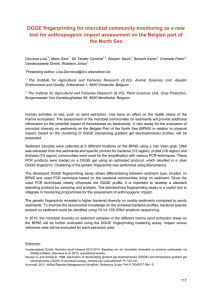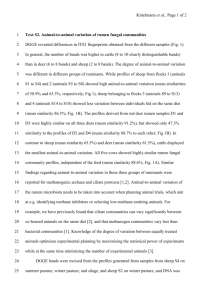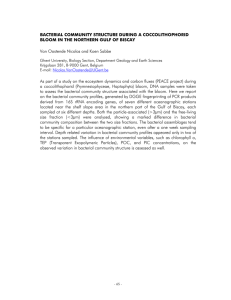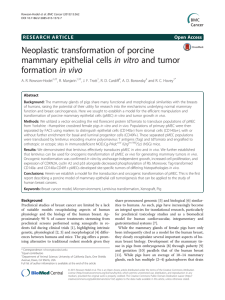Investigating the ovine mammary microbiome using PCR-DGGE Emma Monaghan , Kevin Purdy
advertisement
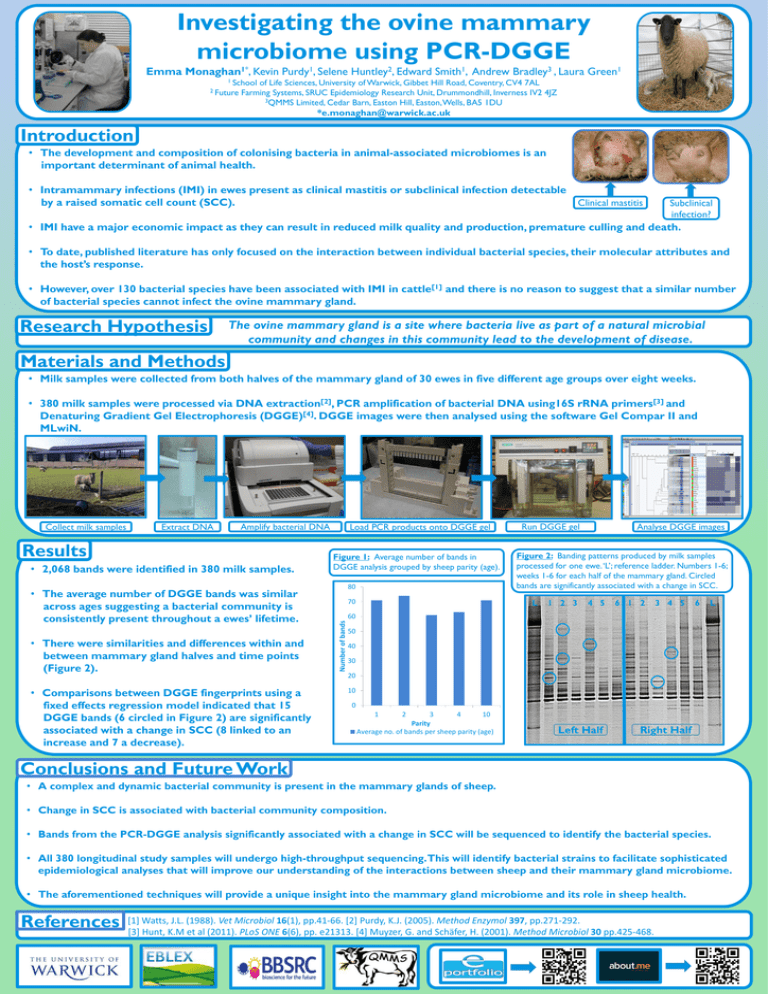
Investigating the ovine mammary microbiome using PCR-DGGE Emma Monaghan1*, Kevin Purdy1, Selene Huntley2, Edward Smith1, Andrew Bradley3 , Laura Green1 1 School of Life Sciences, University of Warwick, Gibbet Hill Road, Coventry, CV4 7AL 2 Future Farming Systems, SRUC Epidemiology Research Unit, Drummondhill, Inverness IV2 4JZ 3QMMS Limited, Cedar Barn, Easton Hill, Easton, Wells, BA5 1DU *e.monaghan@warwick.ac.uk Introduction • The development and composition of colonising bacteria in animal-associated microbiomes is an important determinant of animal health. • Intramammary infections (IMI) in ewes present as clinical mastitis or subclinical infection detectable by a raised somatic cell count (SCC). Clinical mastitis Subclinical infection? • IMI have a major economic impact as they can result in reduced milk quality and production, premature culling and death. • To date, published literature has only focused on the interaction between individual bacterial species, their molecular attributes and the host’s response. • However, over 130 bacterial species have been associated with IMI in cattle[1] and there is no reason to suggest that a similar number of bacterial species cannot infect the ovine mammary gland. • Research Hypothesis The ovine mammary gland is a site where bacteria live as part of a natural microbial community and changes in this community lead to the development of disease. Materials and Methods • Milk samples were collected from both halves of the mammary gland of 30 ewes in five different age groups over eight weeks. • 380 milk samples were processed via DNA extraction[2], PCR amplification of bacterial DNA using16S rRNA primers[3] and Denaturing Gradient Gel Electrophoresis (DGGE)[4]. DGGE images were then analysed using the software Gel Compar II and MLwiN. Extract DNA Amplify bacterial DNA Results • 2,068 bands were identified in 380 milk samples. • The average number of DGGE bands was similar across ages suggesting a bacterial community is consistently present throughout a ewes’ lifetime. • There were similarities and differences within and between mammary gland halves and time points (Figure 2). • Comparisons between DGGE fingerprints using a fixed effects regression model indicated that 15 DGGE bands (6 circled in Figure 2) are significantly associated with a change in SCC (8 linked to an increase and 7 a decrease). Load PCR products onto DGGE gel Figure 1: Average number of bands in DGGE analysis grouped by sheep parity (age). 80 Run DGGE gel Analyse DGGE images Figure 2: Banding patterns produced by milk samples processed for one ewe. ‘L’; reference ladder. Numbers 1-6; weeks 1-6 for each half of the mammary gland. Circled bands are significantly associated with a change in SCC. L 70 1 2 3 4 5 6 1 2 3 4 5 6 L 60 Number of bands Collect milk samples 50 40 30 20 10 0 1 2 3 4 10 Parity Average no. of bands per sheep parity (age) Left Half Right Half Conclusions and Future Work • A complex and dynamic bacterial community is present in the mammary glands of sheep. • Change in SCC is associated with bacterial community composition. • Bands from the PCR-DGGE analysis significantly associated with a change in SCC will be sequenced to identify the bacterial species. • All 380 longitudinal study samples will undergo high-throughput sequencing. This will identify bacterial strains to facilitate sophisticated epidemiological analyses that will improve our understanding of the interactions between sheep and their mammary gland microbiome. • The aforementioned techniques will provide a unique insight into the mammary gland microbiome and its role in sheep health. References [1] Watts, J.L. (1988). Vet Microbiol 16(1), pp.41-66. [2] Purdy, K.J. (2005). Method Enzymol 397, pp.271-292. [3] Hunt, K.M et al (2011). PLoS ONE 6(6), pp. e21313. [4] Muyzer, G. and Schäfer, H. (2001). Method Microbiol 30 pp.425-468.
